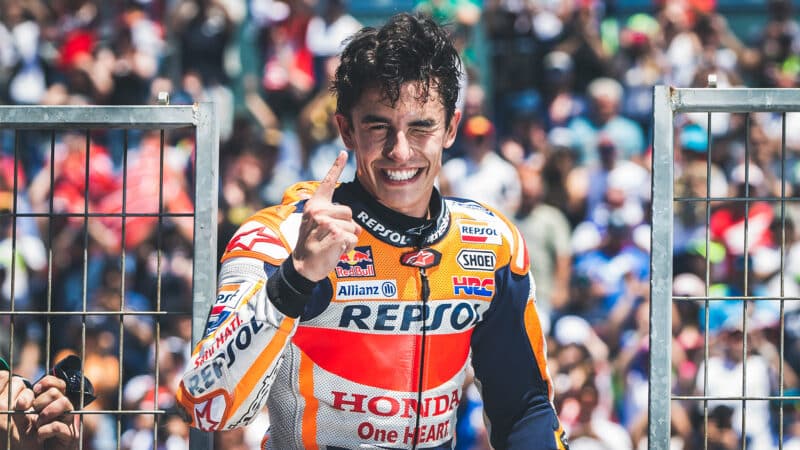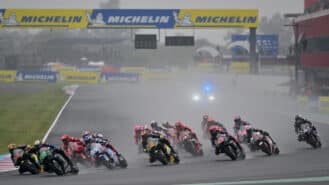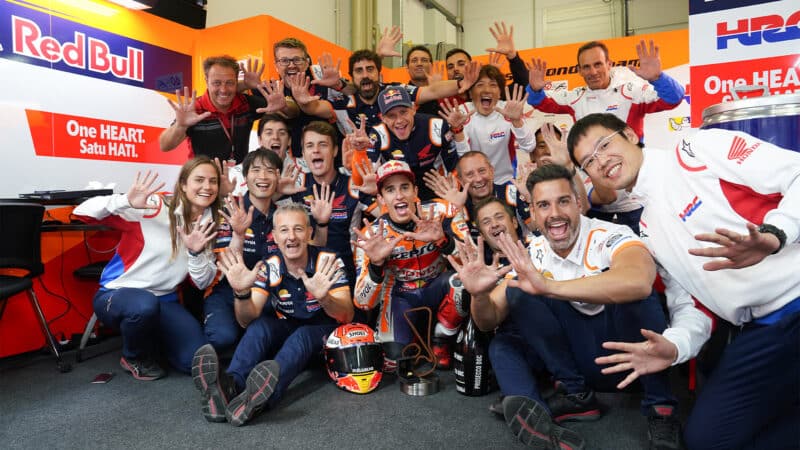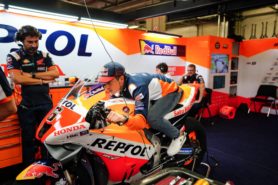The book, subtitled This Is How I Win My Race, comes out at a time when Márquez’s career is once again full of doubts. Not physical, this time, but contractual, so the question is no longer, will he be fit enough to win again? But will he have a good enough bike to win again?
Being Marc Márquez is autobiographical but doesn’t have the usual format of a life story. It’s divided into chapters, titled Technology, Loyalty, Concentration, Ego, Friendship and so on.
There are some great lines…
“If I see a wall I go through it. It’s as simple as that. It doesn’t matter how many goes it takes or how hard I hit my head: I won’t stop until I’ve got through the wall… This has always been my approach and it will never change.”
Even though he knows his next big accident could be his last, due to the double-vision problems that have threatened his career more than the many broken bones.
“I know full well that the next massive crash could not only end my career but also affect me for the rest of my life.”
Like most racers he’s an adrenaline junkie, but he’s got a bigger habit than most.
“I need the maximum amount of adrenaline in the shortest time. And I need to be on the limit.”
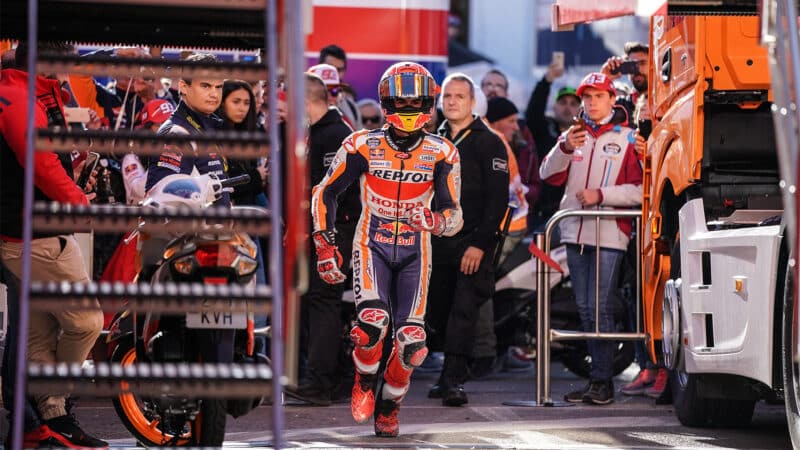
A familiar sight: Márquez sprinting back to his garage after a practice fall. He doesn’t regret his over-the-limit approach to racing
To me, Márquez has always been MotoGP’s Ayrton Senna: utterly ruthless, win by any means necessary, his dedication to surpassing the limit almost spiritual.
This is Senna talking, back in the day…
“On a given day, a given circumstance, you think you have a limit. And you then go for this limit and you touch this limit, and you think, ‘Okay, this is the limit’. And so you touch this limit, something happens and you suddenly can go a little bit further. With your mind power, your determination, your instinct, and the experience as well, you can fly very high.”
Márquez is the same, or at least, he was…
